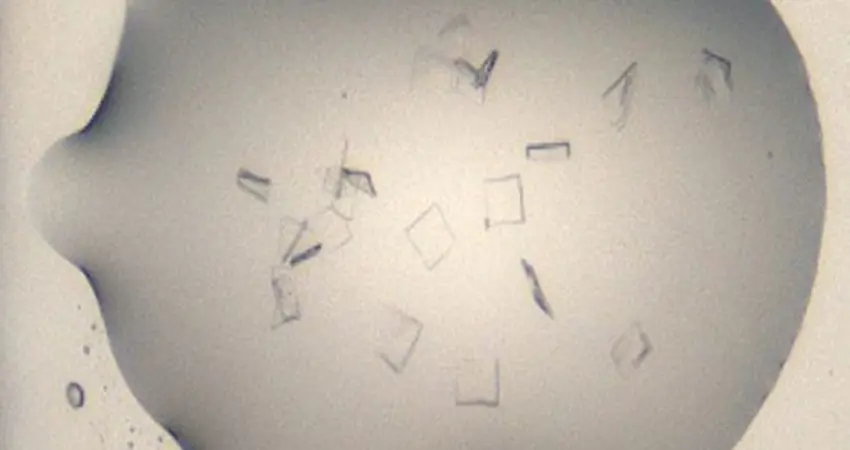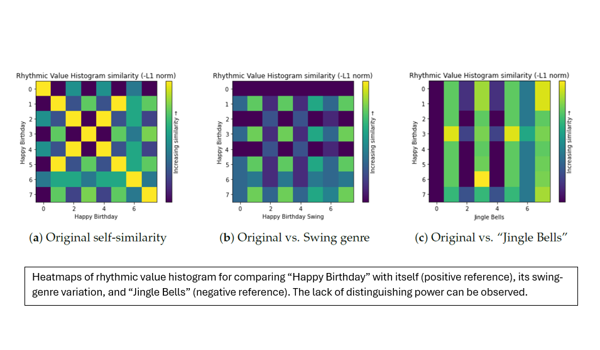10 Apr 2025
Seeing Inside Proteins
Absorption correction in long-wavelength crystallography unlocks new possibilities in structural biology and drug design

Crystals of proteins inside the SARS-CoV-2 virus. These proteins are essential for the virus to replicate and spread. Photo with kind permission of Diamond Light Source
Protein, found in meat, fish, eggs, beans and milk, helps us grow and stay strong. Proteins also help cells work properly. By studying the shape of proteins, scientists can understand what causes disease and this helps to create medicines and treatments.
Crystallography is a technique that helps scientists study proteins by turning them into crystals. Proteins can be crystallized by slowly evaporating a solution, mixing them with special chemicals, or changing the temperature or pH to encourage crystal formation. When proteins are crystallized, their atoms arrange in a repeating pattern, allowing X-rays to pass through and create detailed images of their structure. Long-wavelength crystallography is one method that enhances this process, helping scientists see specific parts of the protein more clearly.
The problem is that whilst in standard X-ray diffraction experiments, errors caused by absorption are small and easily accounted for, in experiments conducted at long wavelengths they become a more serious limitation and can significantly degrade the data quality.
|
Yishun Lu is a final-year DPhil student, supervised by Prof Wes Armour at the Oxford e-Research Centre. His DPhil project, collaborating with Beamline I23, Diamond Light Source, focuses on improving the accuracy of scientific experiments by correcting errors in a precise and efficient way. To do this, he uses a technique called ray tracing, which follows the path of light or X-rays to measure how errors occur in experiments. Additionally, he uses powerful computer chips called GPUs (Graphics Processing Units) to speed up the process. With this acceleration, his method works 180 times faster than before, making error correction much quicker and more effective. More details can be found in the Diamond newsletter Tomography meets diffraction: new software for analytical absorption correction.
|
|
 |

Sketch showing how ray-tracing method is used to simulate X-ray diffraction when it hits a crystal (Lu Y et al.). A yellow loop holds the crystal, taking it from the solution and placing it under the X-ray beam.
"We are aiming to deliver an advanced, accurate and accelerated solution for absorption correction in long-wavelength crystallography by applying ray-tracing method on tomography reconstruction model.”
We use a ray-tracing method to perform an analytical absorption correction strategy based on the 3D model of the sample derived from X-ray tomography. The ray-tracing method accurately determines individual path lengths through the different sample materials: the crystal, sample mount, mother liquor, and the oils or glues used to mount the crystals.
In addition, the ray-tracing method is combined with advanced image processing techniques and statistical methods to effectively remove noise and enhance the accuracy of absorption coefficient calculations. Everything is integrated in the software AnACor 2.0, which employs advanced computational strategies and GPU acceleration. This significantly improves computational speed, making it up to 180 times faster than AnACor 1.0 while still performing accurate analytical absorption corrections.
Accurate absorption correction in long-wavelength crystallography unlocks new possibilities in structural biology and drug design. Providing more accurate data quality with accelerated computation enables rapid and precise atom localization, protein modelling, improving tools like AlphaFold3 and guiding drug discovery with atomic-level insights. This breakthrough can transform our understanding of complex biomolecules, driving innovation in medicine and biotechnology.





